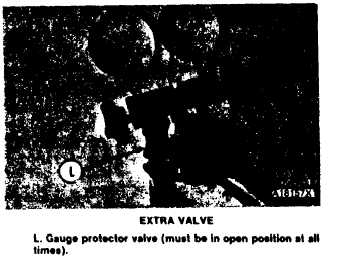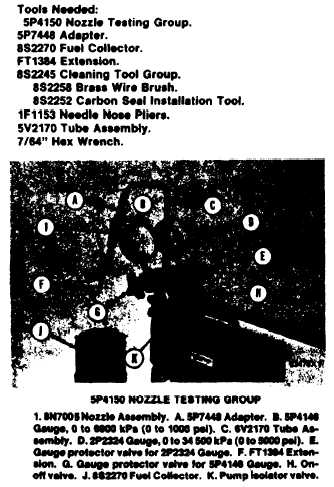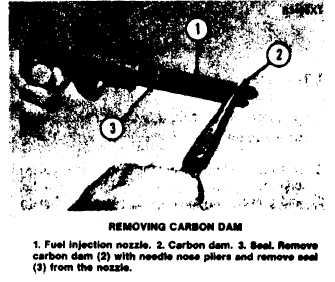FUEL SYSTEM
TESTING AND ADJUSTING
TM 5-3805-263-14&P-2
temperature at an exhaust manifold port is an indica-
tion of no fuel to the cylinder. This can possibly be an
indication of a nozzle with a defect. Extra high tem-
perature at an exhaust manifold port can be an indi-
cation of too much fuel to the cylinder, alsocaused by
a nozzle with a defect.
The most common defects found with the fuel
injection nozzles are:
1. Carbon on tip of the nozzle or in the nozzle
orifice.
2. Orifice wear.
CAUTION
Do not teat nozzles unless you have the correct
service tools.
TESTING 8N7005 FUEL
INJECTION NOZZLES
1-38
CAUTION
Be sure to use clean SAE J967 Calibration oil
when tests are made. Dirty test oil will damage
components of fuel injection nozzles. The term-
perature of the test oil must be 18 to 24°C (88 to
75°F) for good test results.
The 8N7005 Fuel Injection Nozzle can not be
disassembled for cleaning or adjustment. Do the tests
that follow to determine if the nozzle performance is
acceptable.
1. Valve Opening Pressure Test.
II. Flush the Nozzle.
III. Tip Leakage Test.
IV. Orifice Restriction Test.
V. Bleedscrew Leakage Test.
Nozzle Preparation for Test
Before fuel injection nozzle (1) can be tested, all
loose carbon around the tip of the nozzle must be
removed with the 8S2258 Brass Wire Brush (M).





